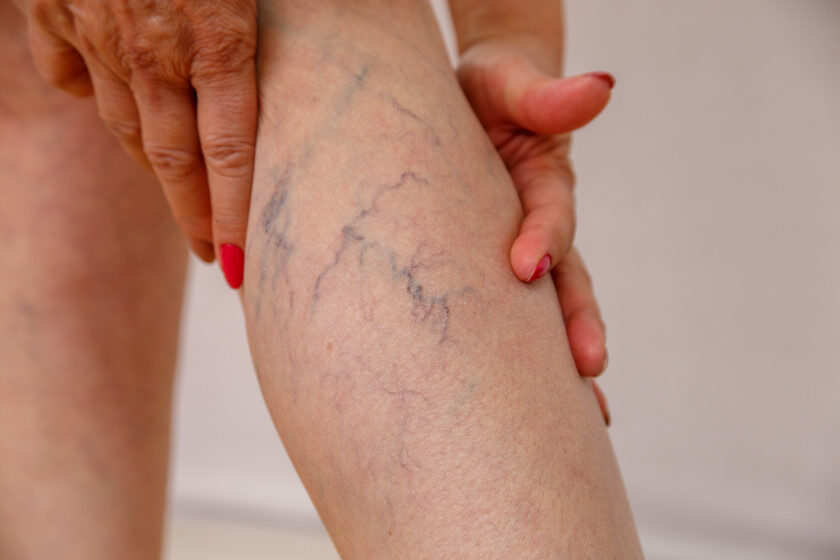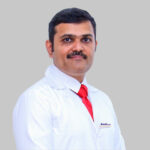
Myths & facts about varicose veins
Varicose veins is one of the most common vascular problems affecting people of all ages in multiple regions in India.
What are varicose veins?
These bulgy blue to purple dilated or tortuous veins in legs occur due to poor function of their valves. Interestingly, 80% of people do not seek treatment in time because of myths surrounding them. Let us learn the facts about these common myths about varicose veins.
- Myth: Varicose veins are only a cosmetic problem
Fact: Although varicose veins can be easily diagnosed by their appearance, they may often be a signal that there is something wrong with leg circulation. Varicose veins cause very few symptoms and hence are frequently ignored by people. Nevertheless, if left untreated, varicose veins can often lead to disturbing problems like leg pigmentation, ulcer, bleeding, or potentially life-threatening blood clots (deep vein thrombosis).
If you notice varicose veins, do not write them off as just another cosmetic problem. Consult a varicose vein specialist vascular surgeon to know more about the severity. Usually, vascular specialists would advise treatment of varicose veins before these complications occur.
- Myth: Varicose veins is a sign of aging
Fact: While vein problems can worsen with age, varicose veins by themselves aren’t a sign of aging. In fact, varicose veins most often are noticed in young individuals and can get worse over time. The average age of patients we treat for varicose veins is 41 years.
Some women notice the onset of varicose veins during pregnancy.
- Myth: Varicose veins only affects women
Fact: Varicose veins are more common in women especially after pregnancy. Almost 10 to 15% of women will notice some degree of varicose veins during & after pregnancy. But this problem can also be found in healthy young men as the main cause of varicose veins is poor function of valves. Hence, these types of varicose veins are termed as primary (with no other underlying problems in veins). Some people might have a genetic tendency of development of varicose veins. Some women notice the onset of varicose veins during pregnancy.
Also Read: Vascular Surgery: Different Types of Vascular Surgeries
- Myth: Varicose veins occurs only due to long standing
Fact: Even though varicose veins can increase due to long standing, this is not the cause of development of varicose veins. The primary cause is incompetent valves, leading to pooling of blood in veins and thus development of twisting veins in legs.
The other factors which can result in deteriorating varicose veins or vein problems are obesity, prolonged standing, or hormonal irregularities.
- Myth: Surgery is the only treatment option for varicose veins
Fact: Not all patients with varicose veins need any specific treatment. Some basic lifestyle changes can help in relieving the symptoms of varicose veins. Open surgery (ligation and stripping) was one of the older methods of treating varicose veins. But, since the past 2 decades, there have been multiple improvements in techniques and minimally invasive procedures like Endothermal ablation, Laser, Radiofrequency, Glue, sclerotherapy are being used routinely for better results, no scars and early recovery. Dr Sumit Kapadia holds a more than 15 years of experience in treating varicose veins and at Aadicura, he can provide all varieties of the most modern varicose vein treatment technologies.
- Myth: Varicose veins will always reoccur after treatment
Fact: With the modern use of doppler guided procedures including Laser, RFA, sclerotherapy and Glue therapy, the overall reoccurrence rates after proper treatment are less than 10 to 15%. Even after a perfectly performed procedure, we would advice patients to wear stocking especially if they have to be standing for longer hours. In case varicose veins come back again after a few years, they might need repeat treatment by sclerotherapy.
Also Read: 8 Tips to Improve Blood Circulation in Legs & Feet
- Myth: Varicose leg ulcers need only skin grafting for treatment
Fact: Non healing leg ulcers are often due to vein problems or artery blockages. So only skin grafting may be inadequate for healing. The underlying vein or artery disease needs to be treated by vascular surgeons for long term healing of ulcer.
- Myth: Recovery after varicose veins treatment is difficult
Fact: Newer treatment methods have quicker recovery times. Most of these minimally invasive procedures can be performed on a day care basis or a one-day admission in hospital. The other advantages of these modern techniques is that regular food, bath & routine daily activities can be resumed within 24 to 48 hours.
Dr Sumit Kapadia is part of the Department of Vascular & Endovascular Surgery at Aadicura Superspeciality Hospital, which is one of the first of its kind group practice in Western India. They bring a collective experience of more than 50 years and have successfully treated more than 50,000 patients. Aadicura superspeciality hospital is proving to be one of the best vascular centres for providing complete vascular & endovascular solutions.
Think Vascular Think Aadicura
Follow us on YouTube

MBBS, MS, MRCS, DNB-Fellow
Dr. Sumit Kapadia
Dr. Sumit Kapadia / MR KAPADIA SUMIT a gold-medalist from Baroda Medical College, obtained his general surgical training and senior residency from SSG Hospital, Vadodara.

MBBS, MS, MRCS, DNB-Fellow
Dr. Sumit Kapadia
Dr. Sumit Kapadia / MR KAPADIA SUMIT a gold-medalist from Baroda Medical College, obtained his general surgical training and senior residency from SSG Hospital, Vadodara.




